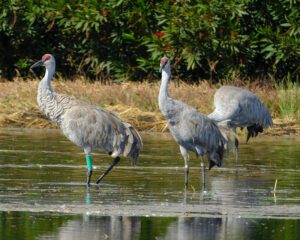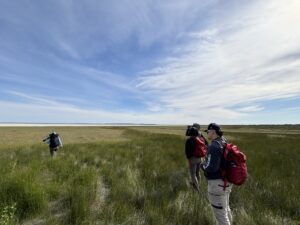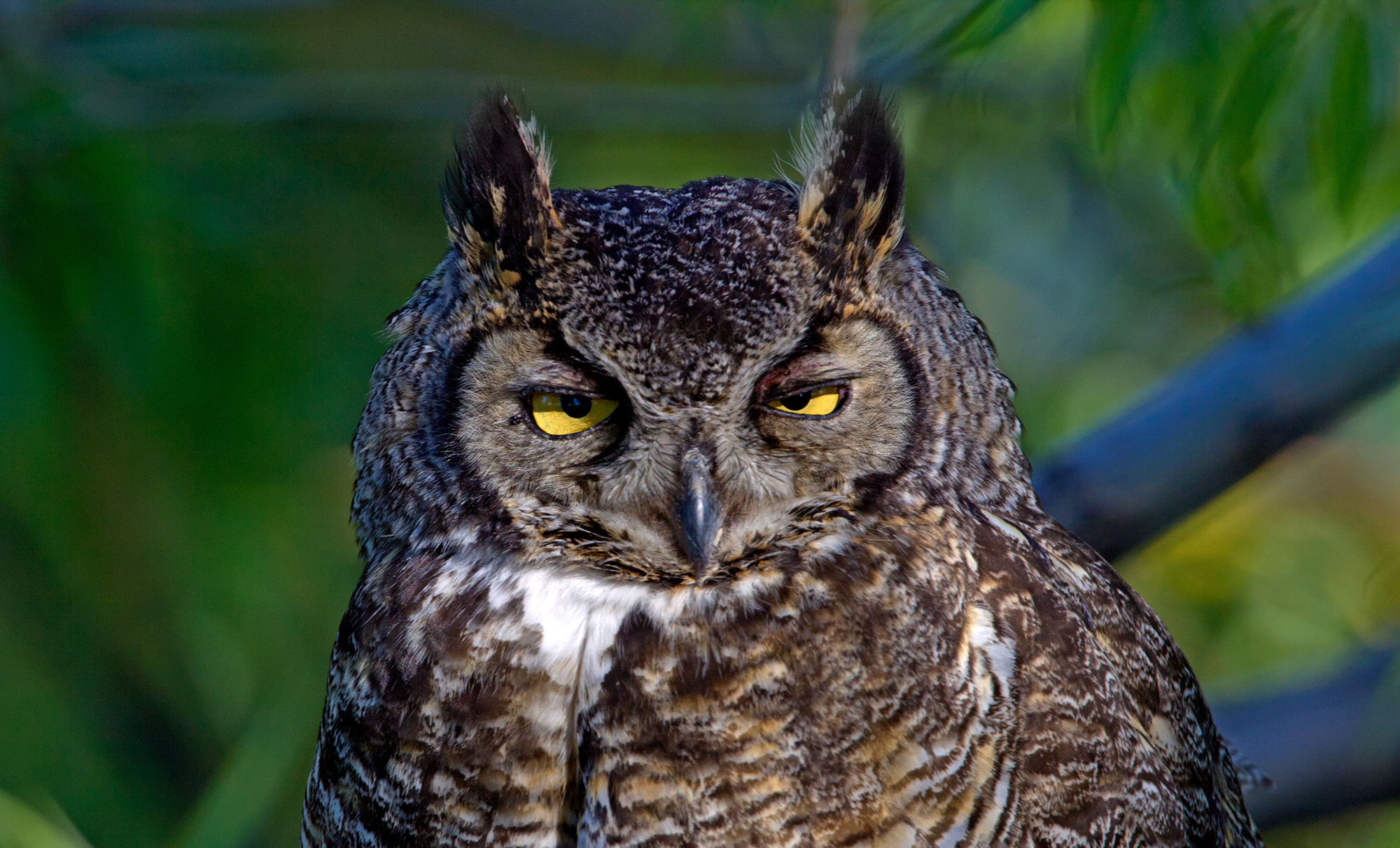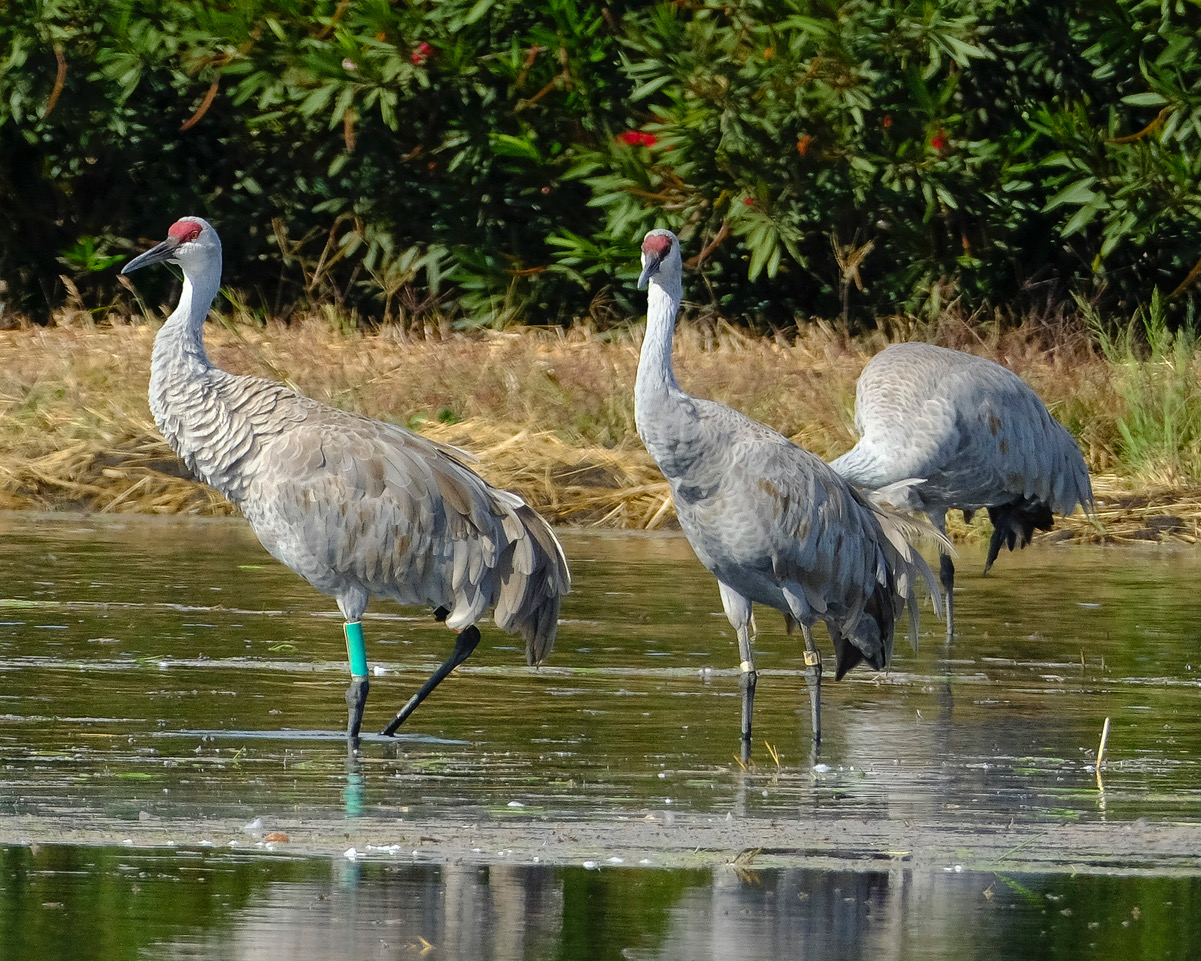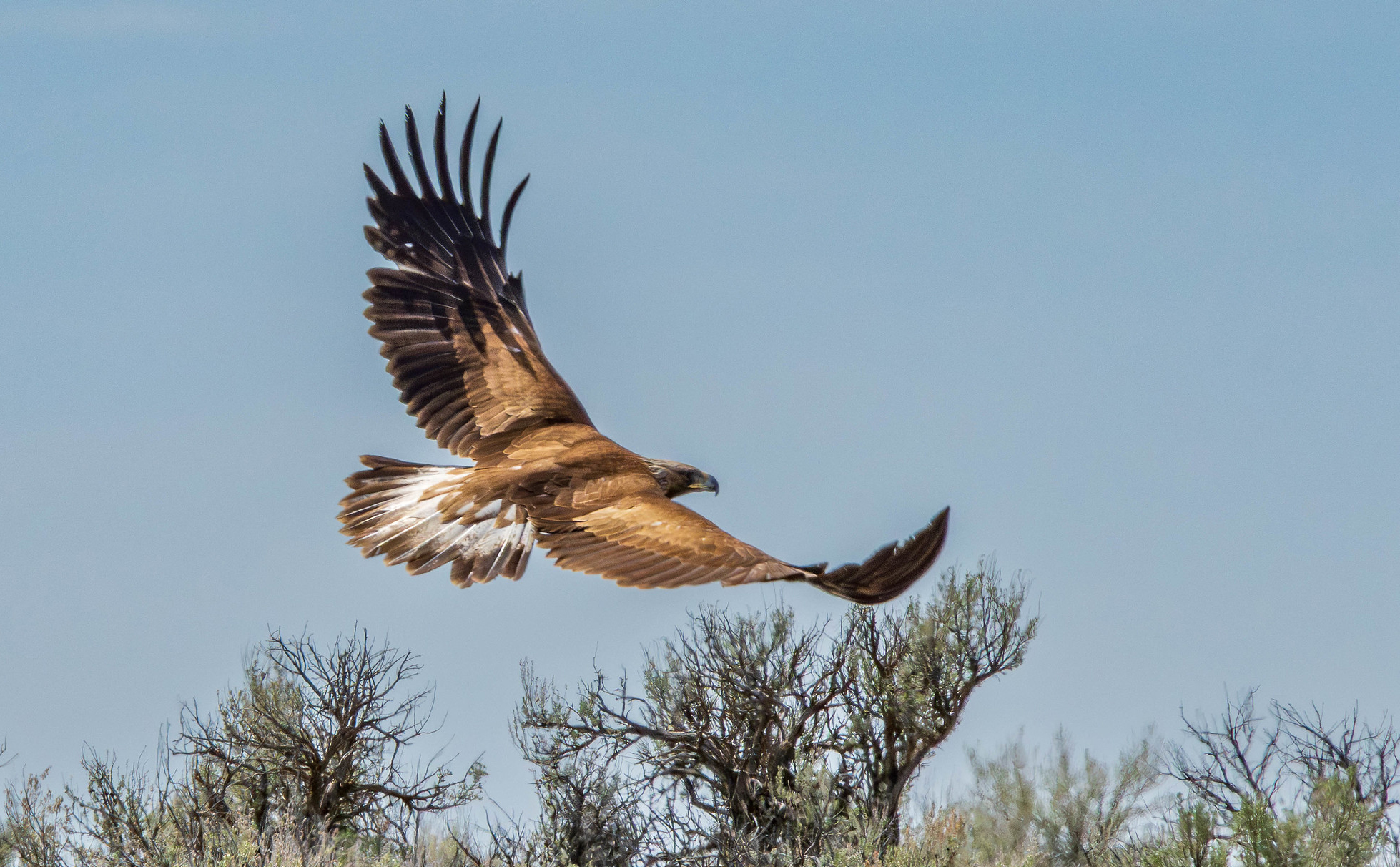Written by Peter Pearsall/Photo by Peter Pearsall
Malheur Refuge is celebrated for the incredible quantity and diversity of migratory birds that use its many habitat types through the seasons, but the Refuge is home to many year-round resident species as well. One such bird—commonly seen but seldom appreciated—is the California quail.
Coveys of California quail weave their way among the high-desert shrubs and open woodlands of Harney County, clucking querulously and darting under cover at the slightest hint of danger. (Used as an adjective, “quail” means to shrink in fear.) These small, chunky birds are at home on or near the ground, foraging for seeds and insects. Intricately scaled plumage and a forward-drooping topknot are the best field marks for this widespread species.
In Oregon, these birds are originally native to the counties bordering California and Nevada. Beginning as early as 1870, state game regulators introduced California quail to other parts of the state, and today they are found across most of Oregon in brushy upland habitats. They are year-round residents of Harney County, and are common even in rural developments. In Burns and Hines, Christmas Bird Counts regularly turn up many thousands of quail, which have become dependent on backyard seed-feeders to survive the harsh high-desert winter.
Quail hens nest on the ground, laying as many as 12 eggs per clutch. Being small, ground-dwelling birds, quail and their young fall prey to a variety of predators, including Cooper’s hawks, coyotes, weasels and snakes. Given a choice, quail will usually flee on foot, but are also capable of exploding into direct, high-speed flight when pressed.
In many cases quail are heard before they are seen. The males’ call of “Chi-ca-go!” is given to establish contact with his covey, and the various clucks and pips uttered by females and young provide a constant dialogue between these gregarious birds.
Quail, like a handful of other hardy native species, have managed to adapt to seasonal flux in the challenging environs of southeast Oregon. The fact that they thrive here—to the point of being one of the most numerous bird species found in the winter—should only increase our appreciation of them.





